A guide to the Jones Act
You are probably wondering if that’s a mistype or are questioning if that’s even a real word. It’s a word that caught my attention as I began my research for this week’s Weekly Wednesday article. Cabotage was originally used in the shipping industry, but has been extended to cover aviation, railways, and road transport. It is defined as the trade or navigation in coastal waters, or the exclusive right of a country to operate the air traffic within its territory.
What does this have to do with thiscruiselife.com and the Weekly Wednesday blog? Cabotage is a major part of the modern-day Jones Act. The Jones Act prohibits any foreign-built, foreign-owned and foreign-flagged vessel from engaging in coastwise trade within the United States.
Coastwise
dictionary.com
Adverb – along the coast.
Adjective – following the coast.
Under the Jones Act lies the Passenger Vessel Services Act of 1886 which applies to passengers. The Jones Act requires that all goods that are transported by water between United States ports must be carried on U.S.-flagged ships, be constructed in the United States, owned by United States citizens, and be crewed by United States Citizens. If a foreign-flagged ship is carrying goods, it can make multiple stops to unload cargo and pick up new cargo, however the newly added items cannot be dropped off at another U.S. port.
Cruise Ships Not Exempt
Cruise ships are not exempted from this law since passengers can be carried along with cargo. When booking a round trip cruise from a United States port, you will always have at least one stop in a foreign country, even if it’s the cruise line’s private island (of which, a lot of the Caribbean private islands are Bahamian owned). You may recall a similar discussion about blue cruises and how they might be the answer to sailing during a pandemic.
Looking closer at this act and how it impacts cruising, the law only applies to ships docking in the United States and its territories. This includes Hawaii, Alaska, Puerto Rico, and beyond. There are a number of cruise lines that are starting back up where their itineraries are exclusively within the same country, like MSC sailing in Italy for example.
American Cruise Lines
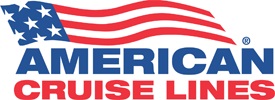
There are currently two major contenders when it comes to cruises within the continental United States where you can board the ship, sail to all US ports and never leave US waters. The more well-known line is American Cruise Lines, which sails primarily along the coasts, through Columbia River, Mississippi River, and a host of other smaller routes.
American Cruise Lines has two categories of itineraries with riverboats consisting of 7 vessels and coastal cruise ships having 5. Several of the riverboats are paddlewheel operated and are equipped with a dining room, educational lectures and luxurious staterooms, all with a view of the riverbanks they float past. What sets these ships apart from the competition is that they were built in the United States, have an all-American crew and the ships are registered in and carry the flag of the United States. Utilizing more conventional propulsion systems, the coastal cruise ships have similar on-board amenities, plus an exercise area and putting green. None of the ships in the fleet are capable of carrying more than 200 passengers at a time. Coupled with US taxes and American wages, these experiences are sure to set you back more than traditional cruise ships, however the experience is said to be completely different.

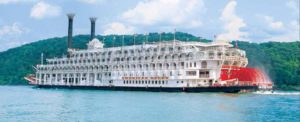
Another line capable of staying on the rivers without having to stop at a foreign port is American Queen Steamboat Company. Sailing a fleet of 4 paddlewheel boats, this line features interior staterooms and has a much cozier appearance. These ships also have all of the United States requirements to be able to sail which drives up their cost to be on-board.
I’ve Got My Pride
If you prefer the modern offerings and a larger ship, there is one option available in the cruise ship category that is allowed to stay completely within U.S. waters and ports. Enter Norwegian Cruise Lines Pride of America! This ship made its debut in 2005 after being originally commissioned by the defunct American Classic Voyages. The hull was pieced together in a shipbuilding yard in Mississippi before being purchased by NCL America and being sent off to Lloyd Werft shipyard in Germany. Once in Germany, the hull was increased from 850 feet in length to 920 feet and increase of more than 8,000 gross tons to more than 80,000. Thanks to the build beginning in the United States, a special exemption was made which allowed for the modified, mostly German-built vessel to attain U.S. registry. (To learn more about this unique ship, head over to Wikipedia.)
Maintaining the United States flag on a ship means that Pride of America is subject to American labor laws and is staffed by a mostly American crew. Being that the vessel rarely leaves U.S. waters, she doesn’t have any gambling onboard. Pride of America is capable to going on cruises for up to 11 days without ever leaving Hawaii or visiting any international ports. Consistent with the river cruises, prices are more elevated on this Norwegian cruise. Many other cruise lines offer routes that include stops in Hawaii, but there will always be at least one foreign port on that voyage.
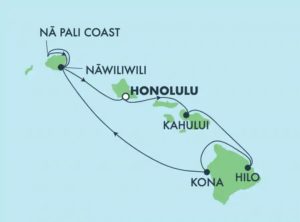
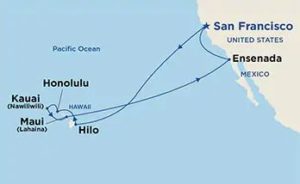
Conclusion
While the Jones Act and cabotage appear to be old and jaded with current trade expectations, it has remained strong since its inception. There have been groups who have opposed to the act, claiming that the Jones Act is protectionist, and that the Act results in higher costs when moving cargo between U.S. ports.
There have been a handful of requests for waivers of the Jones Act and the provisions are approved on a case-by-case basis by the Department of Homeland Security. Historically these waivers are activated in times of national emergencies or upon the request by the Secretary of Defense.
It doesn’t appear that any of the cruise lines that serve United States passengers have submitted a request for a temporary exemption from the Jones Act to get their ships back on the water with human cargo onboard. Perhaps as the CDC continues to evaluate their guidelines for a safe return to sail, we will see different groups engage with the Department of Homeland Security to lift the Jones Act so revenue streams can begin to flow once again.
Would you take a cruise to no where or visit the cruise lines’ private island just to be able to get back on the waters? It will be interesting to see how things unfold over the next several months in the cruise industry.

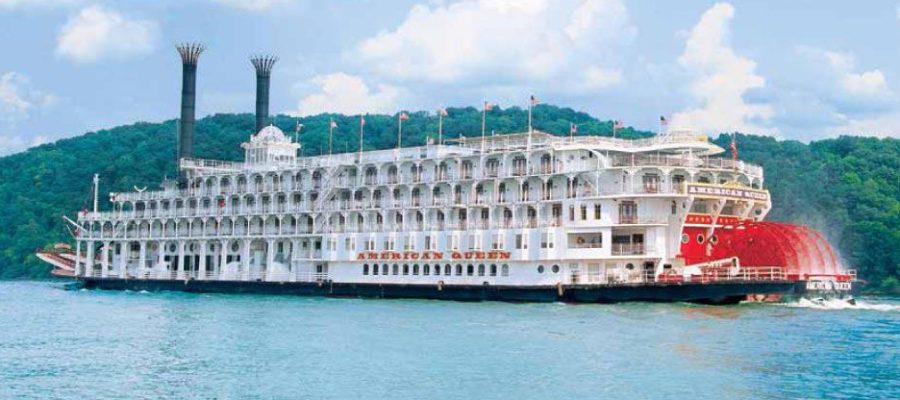
2 thoughts on “Weekly Wednesday – Cabotage”